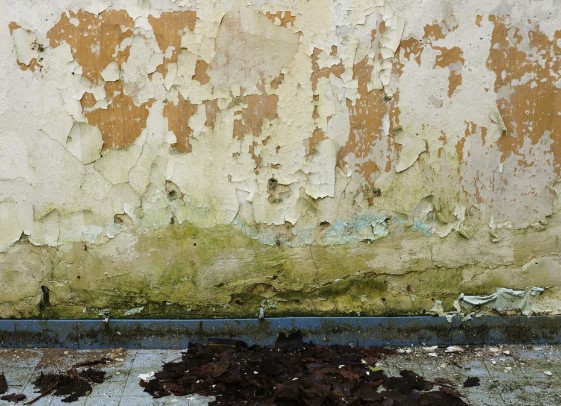Imagine this: the gentle ocean breeze, the soothing sound of waves crashing on the shore, and the picturesque views of Seal Beach right at your doorstep.
However, beneath the surface of this coastal paradise, there may be a hidden threat lurking in the form of mold. As a homeowner in this idyllic setting, you strive to maintain your slice of heaven, but how can you ensure that mold is not silently causing damage to your property and health?
Signs of Mold Infestation
Given the common mold types you may encounter in Seal Beach coastal properties, being able to recognize the signs of mold infestation is crucial for maintaining a healthy living environment. Mold infestations often manifest through visible signs such as discolored patches on walls, ceilings, or floors. These patches can appear green, black, brown, or even white.
Musty or damp odors in specific areas of your home, like basements or bathrooms, are also indicative of mold presence. Peeling or bubbling paint, warping wood, or wallpaper that’s coming loose can signal an underlying mold issue. Additionally, if you or your family members experience unexplained symptoms like sneezing, coughing, or skin irritation when spending time in certain areas of your home, it could be due to mold exposure.
Keep an eye out for any water stains or past water damage, as these areas are prone to mold growth. Regular inspections and prompt action upon noticing these signs are essential to prevent extensive mold infestations and safeguard your living space.
Risks of Mold Infestations
To fully grasp the implications of mold infestations, understanding the health risks and structural implications associated with unchecked mold growth in Seal Beach coastal properties is paramount.
Mold infestations pose significant health hazards as airborne mold spores can cause respiratory issues, allergic reactions, and aggravate asthma symptoms in individuals exposed to them. Prolonged exposure to mold can lead to more severe health complications, especially in vulnerable populations.
Moreover, mold can cause extensive property damage as it thrives in damp environments, compromising the structural integrity of buildings. Mold growth can weaken drywall, wood, and other materials, potentially leading to costly repairs and renovations.
Additionally, mold infestations can decrease property value and make it challenging to sell or rent out affected properties. Addressing mold infestations promptly through professional inspections and remediation is crucial to safeguard both the health of occupants and the structural integrity of Seal Beach coastal properties.
Signs of Mold Growth
When inspecting for mold growth in Seal Beach coastal properties, be vigilant for specific signs that indicate the presence of mold. Identifying spore sources is crucial in detecting mold early. Look for visible mold growth on walls, ceilings, or floors. Mold often appears as discolored patches that can be black, green, or white.
Musty odors are another clear indication of mold presence. If you notice a damp, earthy smell, investigate further for mold growth. Additionally, be mindful of any recent water damage or leaks, as these create hidden moisture dangers that promote mold growth. Check for water stains, peeling paint, or bubbling wallpaper, as these are signs of underlying moisture issues.
Keep an eye out for condensation on windows or walls, as excess moisture encourages mold development. By staying alert to these signs and promptly addressing any concerns, you can protect your Seal Beach coastal property from the dangers of mold infestations.
Professional Mold Inspection Process
Inspectors trained in mold detection techniques are essential for thoroughly evaluating Seal Beach coastal properties for any potential mold infestations. When conducting a professional mold inspection, various testing methods are utilized to assess the extent of mold presence accurately. These methods may include air quality testing, surface sampling, and moisture readings to identify mold spores and locate any hidden growth areas within the property.
Once the inspection is complete, inspectors can provide detailed reports outlining their findings and recommendations for remediation options. Depending on the severity of the mold infestation, remediation options may range from simple cleaning and disinfection to more extensive mold removal procedures. Inspectors can also advise property owners on preventive measures to avoid future mold growth, such as improving ventilation, fixing leaks, and maintaining proper humidity levels.
Preventive Measures for Coastal Properties
Implementing effective preventive measures is crucial for maintaining the integrity and longevity of coastal properties in Seal Beach. To safeguard your coastal property, regular coastal maintenance is essential.
Begin by inspecting the property for any signs of wear and tear, such as cracked seals on windows or doors, which can allow moisture intrusion. Stay proactive by ensuring proper ventilation throughout the property to prevent humidity buildup, a common precursor to mold growth.
Regularly inspect and maintain your property’s exterior, including the roof, gutters, and siding, to prevent water intrusion. Property preservation also involves promptly addressing any plumbing leaks or issues to prevent water damage.
Consider investing in a dehumidifier for moisture control, especially in areas prone to high humidity levels. Additionally, educate yourself on the local weather patterns to anticipate and prepare for potential challenges.

